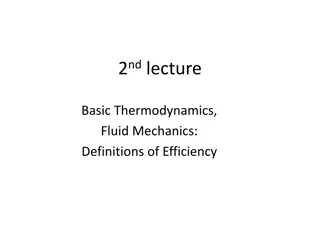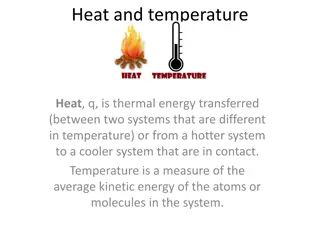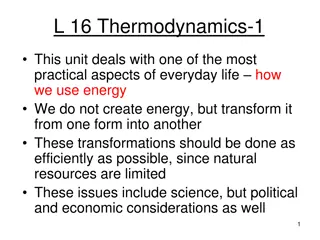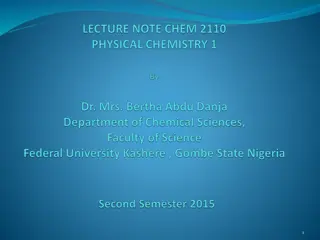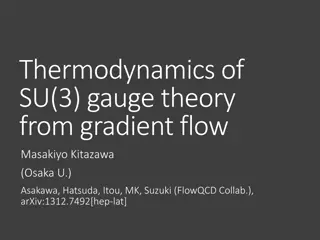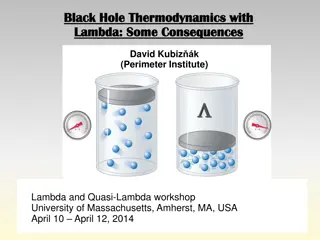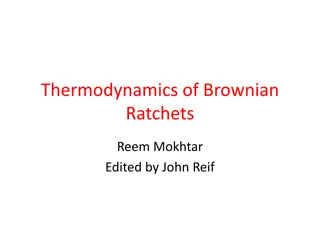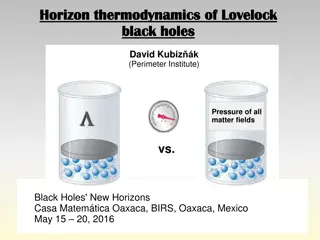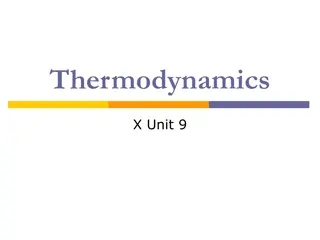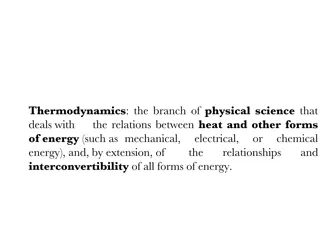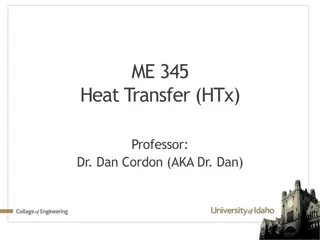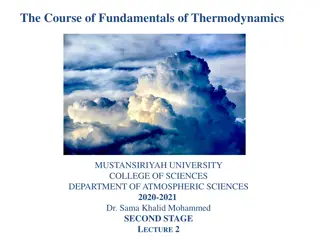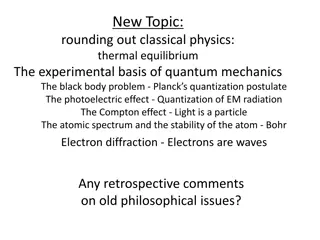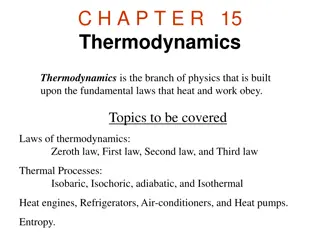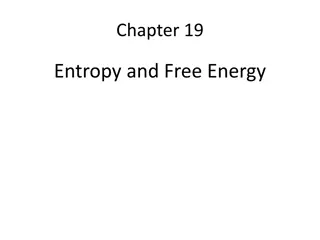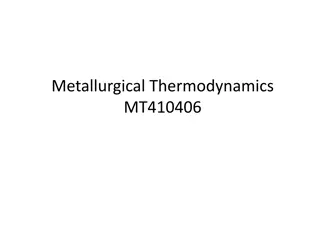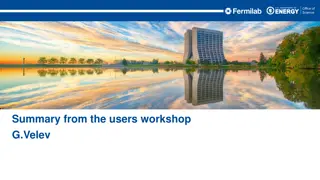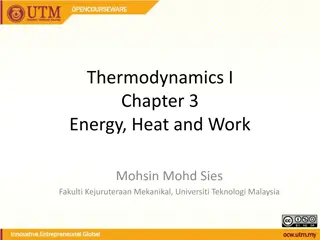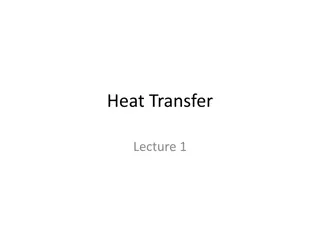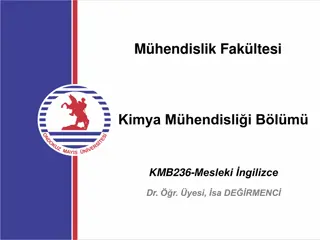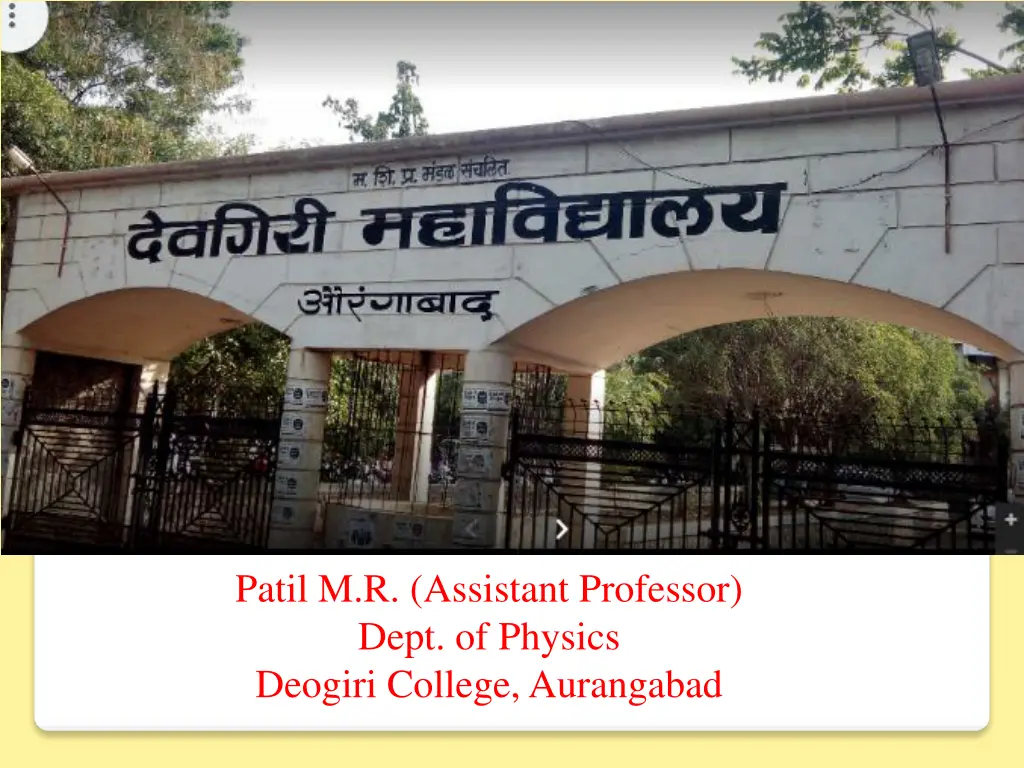
Understanding the Laws of Thermodynamics
Explore the fundamental principles of thermodynamics through insightful images and explanations. Delve into concepts like the Zeroth Law, the First Law emphasizing energy conservation, and historical perspectives on the Second Law. Gain a deeper understanding of how these laws govern energy transfer and conversion.
Download Presentation

Please find below an Image/Link to download the presentation.
The content on the website is provided AS IS for your information and personal use only. It may not be sold, licensed, or shared on other websites without obtaining consent from the author. If you encounter any issues during the download, it is possible that the publisher has removed the file from their server.
You are allowed to download the files provided on this website for personal or commercial use, subject to the condition that they are used lawfully. All files are the property of their respective owners.
The content on the website is provided AS IS for your information and personal use only. It may not be sold, licensed, or shared on other websites without obtaining consent from the author.
E N D
Presentation Transcript
Patil M.R. (Assistant Professor) Dept. of Physics Deogiri College, Aurangabad
The Laws of Thermodynamics
The Zeroth Law of Thermodynamics If two systems are separately in thermal equilibrium with a third system, they are in thermal equilibrium with each other.
The First Law of Thermodynamics Q = + W Heat absorbed by the system Work done by the system Change in the system s internal energy For Infinitesimal, Quasi-Static Processes Q = d + w Total Energy is Conserved
Energy can neither be created nor destroyed. It can only be changed from one form to another. Rudolf Clausius, 1850 The 1st Law of Thermodynamics is Conservation of Total Energy!!!! It says nothing about The Direction of Energy Transfer!
Historical Comments Much early thermodynamics development was driven by practical considerations. For example, building heat engines & refrigerators. So, the original statements of the Second Law of Thermodynamics may seem different than that just mentioned.
Various Statements of the Second Law No series of processes is possible whose sole result is the absorption of heat from a thermal reservoir and the complete conversion of this energy to work. That is There are no perfect engines! It will arouse changes while the heat transfers from a low temperature object to a high temperature object. 1. 2. Rudolf Clausius statement of the Second Law. Strange sounding?
It will arouse other changes while the heat from the single thermal source is taken out and is totally changed into work. Lord Kelvin s (William Thompson s) statement of theSecond Law. 3. It is impossible to extract an amount of heat QH from a hot reservoir and use it all to do work W. Some amount of heat QC must be exhausted to a cold reservoir. 4. The Kelvin-Planck statement of theSecond Law.
Examples. 1. Take two bodies, one hotter than the other and put them in contact, - heat will flow from the hot body to the cold one, but not the opposite direction. 2. Consider a gas that fills a container. About half of the molecules (but never exactly half !) are in one half of the container, the rest in the second half. Each molecule can move freely, so in principle nothing prevents all the molecules to occupy only 1/2 of the container. But left alone, it never happens (never = the time it takes this to happen is longer than the age of the universe). But the opposite direction does happen: if we begin by filling only 1/2 of the container with molecules, after some time they fill the entire container. This process is irreversible. We lost information during this process: initially, we knew that all the molecules are in one half, but at the end we cannot constrain the location of each molecule inside the container. The final state is thus less ordered or more random than the initial one.

